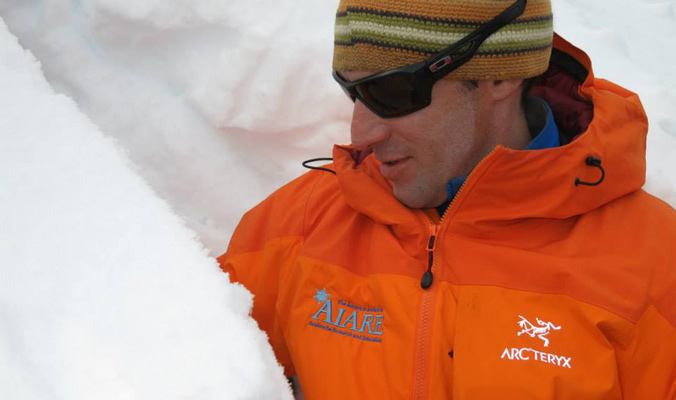Is it safer to be a backcountry skier now than it was 20 years ago? It’s a complicated question, but most snow-safety gurus believe the answer is yes. We spoke with eight leaders in avalanche mitigation and rescue about the progress made—and challenges that remain—since Backcountry premiered.
Brian Lazar, 40, is the deputy director of the Colorado Avalanche Information Center and the former executive director of AIARE. He is based in Boulder, Colorado. Here’s an excerpt from our conversation on 20 years of education, safety and snow science.

Brian Lazar digs avy safety. [Photo] Diego Allolio
Avalanche courses are combatting what humans are apt to do—which is making emotional decisions—with tactics that we know have the best chance of helping people stay alive. We’re teaching a repeatable decision-making process that employs things like checklists. This has worked in other industries like aviation and medicine.
A lot of avalanche centers are communicating the risks by listing the avalanche problems, which is very new. So people are reading the forecast and they’re writing down what the avalanche problems are for the day, where they exist, and then part of the checklist process is deciding which terrain should be ruled out for the day. For example, if you read through the forecast and sat down with your group and said, “Based on the problem today, which is large, destructive persistent slabs on north aspects above treeline, we’re not going to ski Avalanche Bowl because it’s got that problem and it faces that direction at that elevation.” Then, when you get in the field and you’re all looking at Avalanche Bowl and it’s full of powder, you’re much less likely to let emotions override you and go, “Hey, why don’t we just ski it?” when you’ve made the decision ahead of time to rule out that terrain for the day.
—
This story was first published in the November 2014 issue. Find the other conversations in this series here.











Related posts:
Mountain Skills: Be Ready With Team and Routine
Fine tuned and dialed in: Off-season prep for the upcoming winter
Mountain Skills: Understanding The Extended Column Test
The Snow Pro: Janelle Smiley talks the art of efficiency